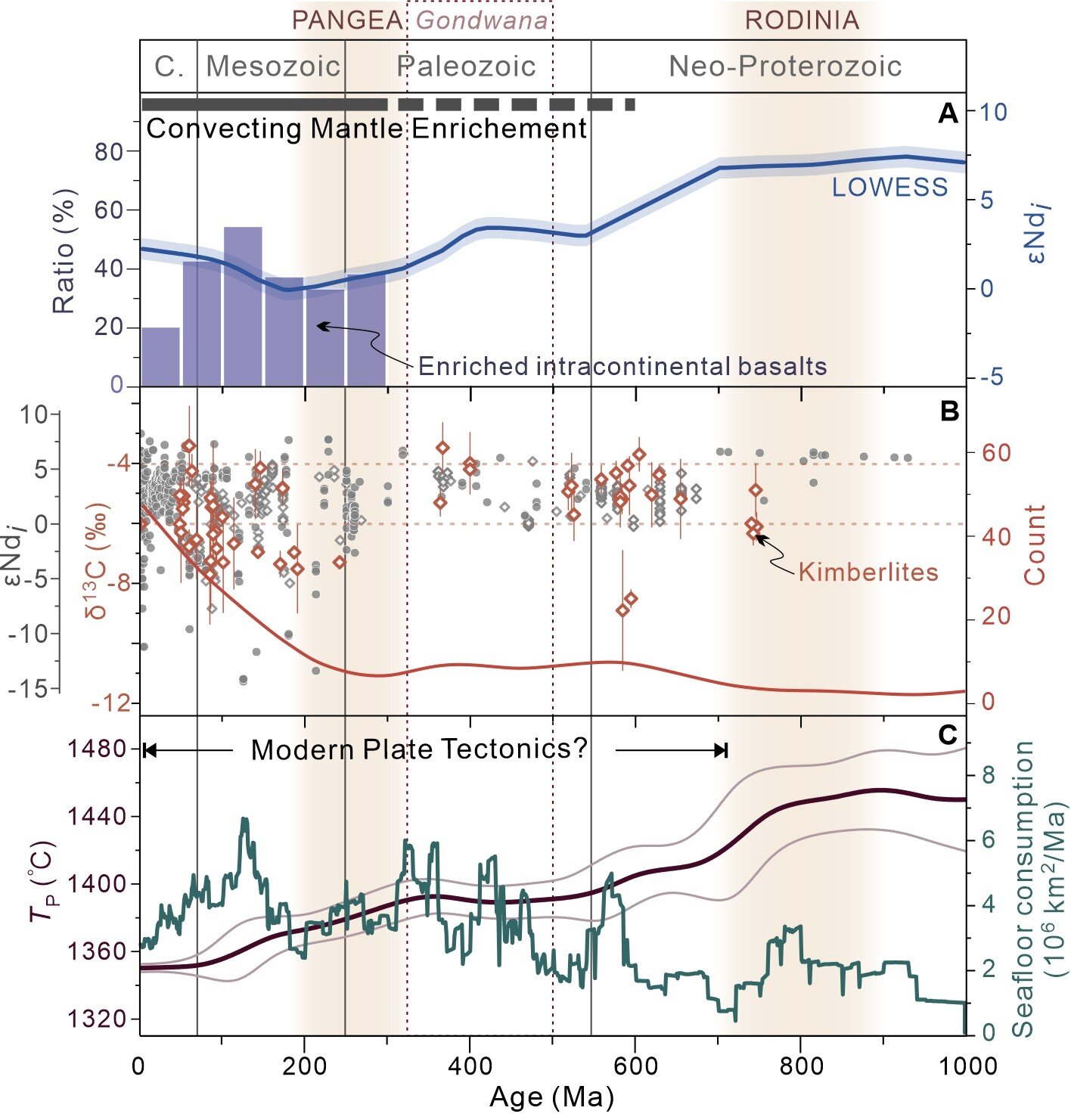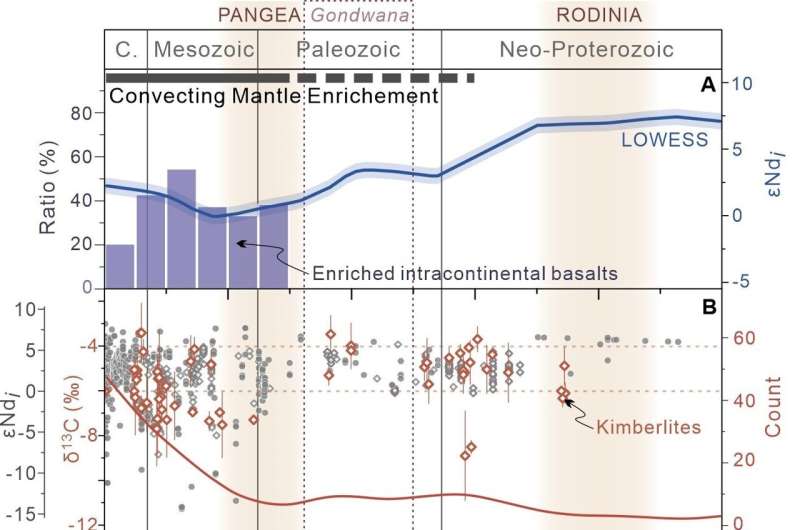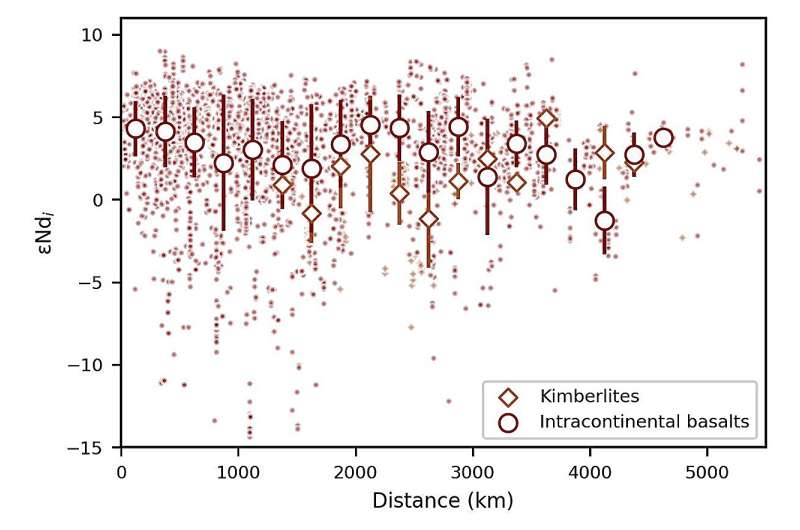

On present-day Earth, plate subduction continuously modifies the chemical composition of the convecting mantle, and various mantle sources linked to these processes have been widely studied. However, when did global chemical heterogeneity of the convecting mantle first emerge in Earth’s geological history? How might Earth’s geodynamic evolution have influenced the chemical composition of the convecting mantle over time?
Researchers from the Institute of Oceanology of the Chinese Academy of Sciences (IOCAS), along with collaborators from Australia, Switzerland and the U.S., have tried to address these questions through a robust compilation of geochemical and isotopic data on intracontinental basaltic rocks over the past billion years.
“This study sheds light on the long-term cycling of materials within Earth’s interior over geologic time scales,” said Prof. Liu He from IOCAS, corresponding author of the study.
The study was published in Science Advances on Oct. 16.
Statistical analysis of the compositions of intracontinental basalts indicates that intracontinental basalts with neodymium (Nd) isotope-enriched geochemical signatures (εNd < 0) occurred only within about the last 300 million years ago. This period coincides with the appearance of kimberlites with signatures of crustal material involvement. These findings suggest a global-scale compositional modification of the convecting mantle.
Since the paleogeographic locations of the enriched intracontinental basalts and kimberlites indicate that mantle enrichment was not affected by the distance from subduction zones, the researchers proposed that the enriched signatures in these intracontinental basalts and kimberlites originated from older, more distant subduction events.

Modern-style plate tectonics, marked by continental crust subduction and deep slab break-off, began in the late Neoproterozoic (approximately 600–700 million years ago). Under the modern tectonic regime, widespread cold subduction and continental crust subduction, along with an increased subduction flux during supercontinent assembly, introduced materials from the crust and upper mantle into the lower mantle. After more than 300 million years, these subducted slabs could be transported back to the upper mantle via mantle upwellings.
“This process may have fundamentally altered the composition of the convecting mantle, and contributed to the formation of enriched magmas, eventually leading to global-scale chemical heterogeneity of the mantle,” said Dr. Chen Qian from IOCAS, first author of the study.
The finding of enriched intraplate mantle-derived magmas appearing approx. 300 million years after the onset of modern plate tectonics provides important insights into the processes, driven by plate tectonics, that are involved in the compositional diversity of Earth’s convecting mantle, according to the researchers.
“The timeframe aligns with models suggesting that it takes considerable time for subducted materials to affect the composition of the upper mantle through these dynamic processes,” said Prof. Liu.
More information:
Qian Chen et al, Global mantle perturbations following the onset of modern plate tectonics, Science Advances (2024). DOI: 10.1126/sciadv.adq7476
Provided by
Chinese Academy of Sciences
Citation:
Plate tectonics drive compositional evolution of the upper mantle, study finds (2024, October 16)
retrieved 16 October 2024
from https://phys.org/news/2024-10-plate-tectonics-compositional-evolution-upper.html
This document is subject to copyright. Apart from any fair dealing for the purpose of private study or research, no
part may be reproduced without the written permission. The content is provided for information purposes only.